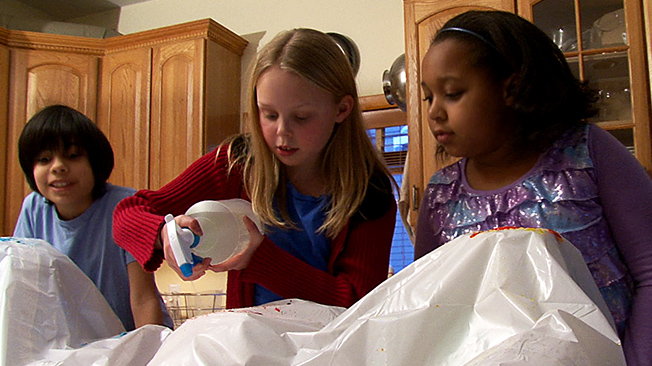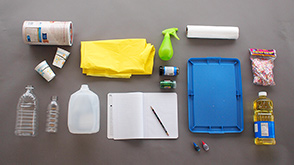Build a Watershed
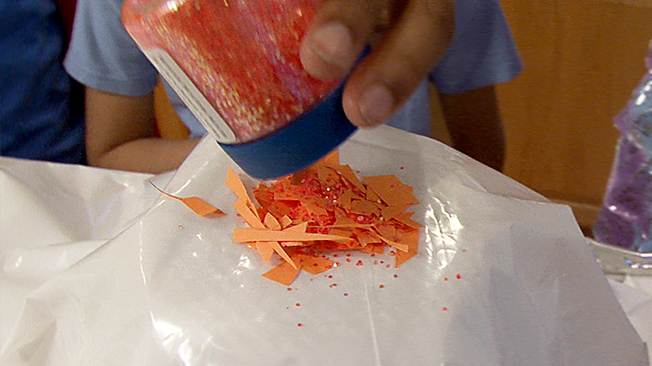
What Is This Activity?
Where does the water go when it rains? Find out by making it rain, right in your own home! In this activity, you and your child will build a simple model of a landscape to see how water droplets flow and how the shape of the land helps collect water.
Introduction
-
-
00:00
What Are Kids Learning?
- A watershed is the land area that collects water and delivers it to a specific area like a lake or ocean.
- The shape of the land affects how and where the water flows.
- Water flows very slowly in a lake and quickly in a river.
- Flowing water can transport things.
Activity 60 minutes
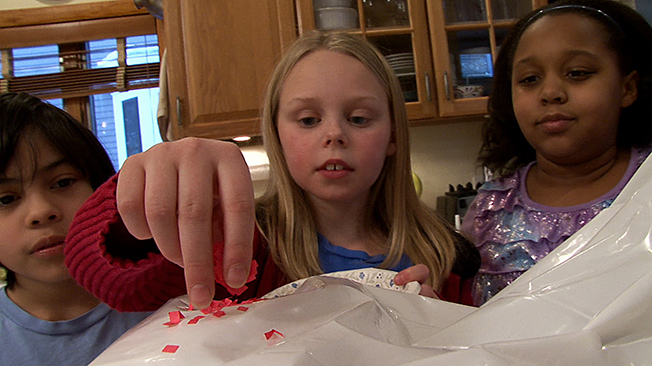
Part A Water, Water, Everywhere
Talk with your child about all the ways you use water in your daily life.
Ask:
- How did you use water today?
- How else do you think people in our community use water?
- Where do you think all that water comes from? This is a good time to talk about where the water you use comes from. Does it come from a lake? A river? Groundwater? Whatever the source, your water ultimately comes from rain or snow that falls on your watershed: the land area that collects rain and snowmelt and channels it into a body of water, such as a lake, river, or ocean.
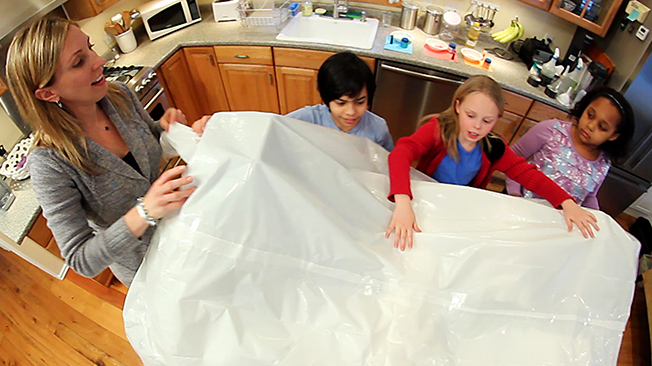
Part B Build a Watershed
Show your child the materials and ask, "How might we use these materials to build a model landscape with hills, valleys, rivers and lakes?" Brainstorm for a few minutes, then build:
- Stack the containers onto a large tray into a pile that's 1 to 2 feet high.
- Make an irregular mound with peaks, ridges, and valleys by draping a tarp or large plastic sheet over the containers. TIP: Be sure that the edges of the sheet are contained within the tray to prevent water from pouring onto the ground when you spritz the tarp with water.
Talk with your child about the model.
Ask:
- How many hills and mountains does our model have? Where's the biggest valley?
- If we spritz water on the mountain peaks, what will happen to it?It will flow downhill.
- Where does the water come from in nature?Rain or snow
Part C Make It Rain
Have your child begin spritzing the model with the spray bottle, and watch where the water goes. As it begins to flow downhill and collect, ask:
- Can you find some lakes? Any rivers?
- Choose a lake in this landscape. Which rivers flow into it?
Then show your child the glitter, cooking oil, cake sprinkles, and food coloring, and ask how you might use the materials to show what happens to pollution. Experiment with these materials. If you drip food coloring or glitter into one of the rivers, where does it go when it rains? How quickly does it spread? Are there any places in the landscape where it doesn't go?
Finally, talk about what this all might have to do with the water that comes out of your faucet. Where does that water come from? It comes from a watershed - which is why it is important to try not to pollute land and water.
Explore Some More
Follow the Water
Pour a bucket or two of water on a driveway or along a curb. For as long as you can, follow where it goes.
Ask:
- What kind of path does the water follow? Does it all go in one direction? Does it go into a drain? How much evaporates before getting to a drain - a little, a lot, all?
- Pour a bucket or two of water on an unpaved area, like a lawn or yard. Compare how this water behaves compared to the water that was poured on the paved area.
- What examples can you find of things being carried away by flowing water?
How's my Water?
Find basic information about your community water supply with the Environmental Protection Agency's How's My Waterway? tool. You also can learn about the quality of your region's drinking water using the E.P.A.'s interactive map. For more about water, check out the U.S. Geological Survey's Water Science Activity Center, where you and your child can try to challenge yourselves with questions such as "How many baths can you get from a rainstorm?"

